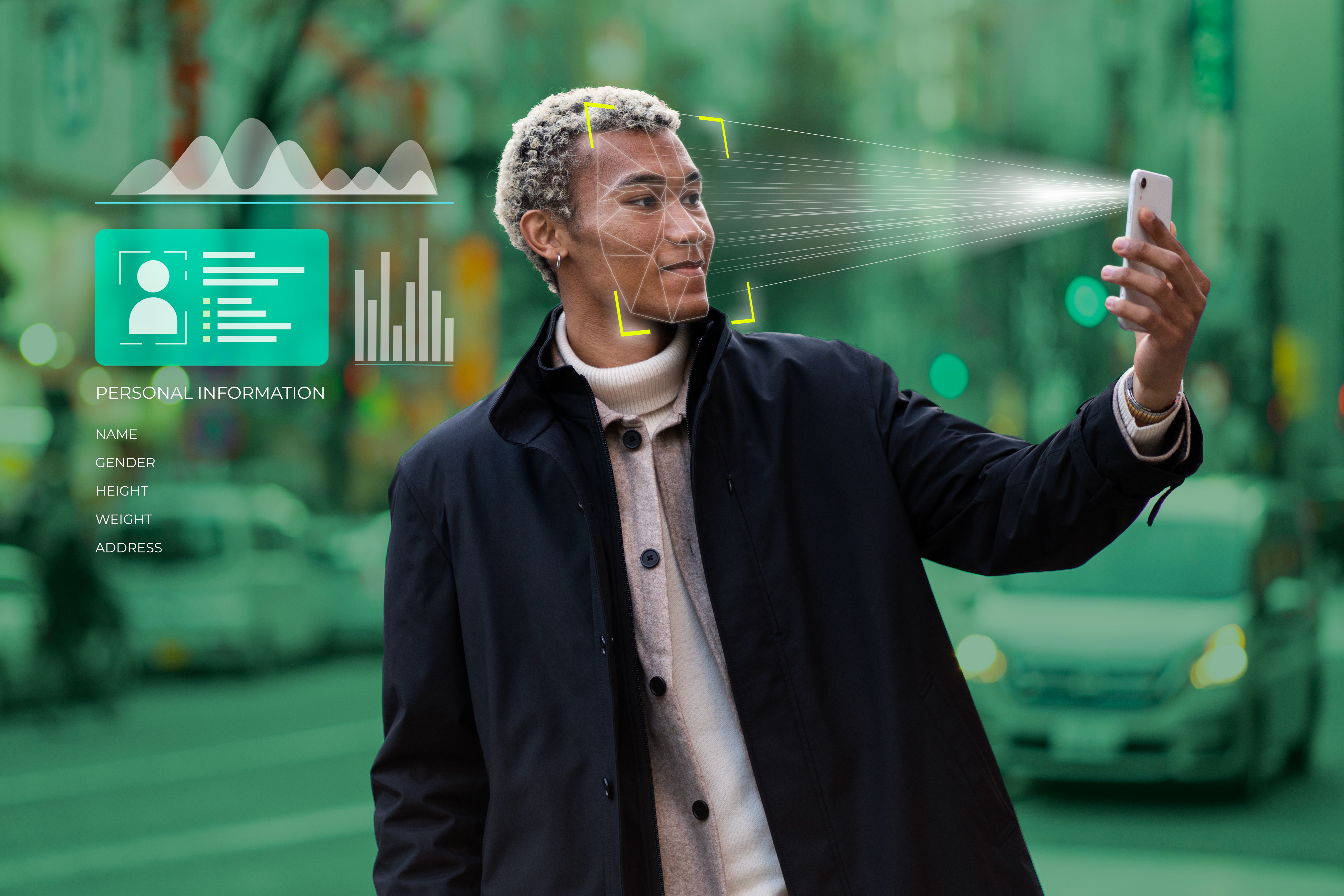
Image Recognition Trends for 2025
In this blog post, we will explore the key trends and emerging applications of image recognition that are set to redefine the landscape in 2025. As businesses and consumers alike embrace these innovations, it is clear that image recognition is no longer just a tool for convenience — it's a transformative force that is driving change in how we interact with technology, gather insights, and make decisions. Join us as we take a closer look at how image recognition is shaping the future and what to expect in the years ahead.
Key Trends in Image Recognition for 2025

Advancements in AI and Deep Learning Models
The field of image recognition has been transformed by the relentless progress in artificial intelligence (AI) and deep learning models. These technologies have redefined how machines perceive and interpret the world, enabling them to process images and videos with astonishing accuracy. As we move into 2025, the advancements in AI and deep learning are reshaping the landscape of image recognition, making it faster, more precise, and more versatile than ever before.
At the core of these advancements lies the evolution of deep learning architectures. Convolutional Neural Networks (CNNs), which have been the backbone of image recognition for years, are now being enhanced with next-generation models like Vision Transformers (ViTs). These new architectures excel at capturing complex patterns and relationships within visual data, allowing for a deeper understanding of images. Vision Transformers, in particular, are proving to be game-changers by leveraging self-attention mechanisms to analyze visual information in a way that mimics human perception.
Another breakthrough is the increasing efficiency of AI models. Developers are creating lightweight versions of powerful architectures that can operate on edge devices such as smartphones, drones, and IoT systems. This shift enables real-time image recognition without relying heavily on cloud computing, reducing latency and improving user experiences. Edge AI has become a critical enabler for applications like autonomous driving, smart home devices, and wearable technology.
Multimodal learning is another exciting frontier in 2025. By combining image recognition with natural language processing (NLP), AI systems can now integrate visual and textual information to understand context more comprehensively. This capability is unlocking new possibilities, from visually guided chatbots to AI systems that can describe complex images in natural language. The integration of multiple data modalities is creating smarter, more intuitive systems that are better equipped to interact with the world.
Real-Time Image Recognition on Edge Devices
Real-time image recognition has become a cornerstone of modern technology, revolutionizing how machines interact with the physical world. As we step into 2025, the focus has shifted to edge devices — smartphones, IoT systems, drones, and more — where image recognition is now performed locally rather than relying on cloud processing. This paradigm shift is unlocking new levels of efficiency, speed, and accessibility in real-time applications.
The key driver of this transformation is the development of lightweight and efficient deep learning models. Traditional image recognition systems required significant computational resources, often relying on powerful servers in the cloud. However, advancements in AI have led to the creation of compact models optimized for edge computing. Techniques such as model pruning, quantization, and knowledge distillation allow these systems to operate on devices with limited hardware capabilities, all while maintaining high accuracy.
By processing images locally on edge devices, latency is significantly reduced. This is critical for applications where speed is paramount, such as autonomous vehicles, real-time surveillance, and augmented reality (AR). For instance, in self-driving cars, decisions must be made in milliseconds to ensure passenger safety. Edge-based image recognition enables vehicles to detect obstacles, traffic signs, and pedestrians without delays caused by data transmission to the cloud.
Energy efficiency is another major advantage of edge computing for image recognition. Processing data locally minimizes the need for constant internet connectivity, reducing power consumption and making it feasible for battery-operated devices. This is particularly important for wearables and IoT devices, where battery life is a key constraint.

Rise of Generative AI for Image Synthesis and Enhancement
Generative AI is redefining the boundaries of creativity and functionality in image recognition, and 2025 marks an era where this technology is reaching unprecedented heights. Leveraging advanced deep learning techniques, generative AI has unlocked the ability to create, modify, and enhance images with remarkable precision, opening up new avenues across industries like entertainment, healthcare, and design.
At the core of generative AI are models like Generative Adversarial Networks (GANs) and diffusion models. These technologies have proven to be exceptionally powerful for synthesizing realistic images from scratch, blending artistry with algorithmic sophistication. GANs, for instance, use a two-model approach—one generating images and the other critiquing them—to produce outputs that closely mimic real-world visuals. Diffusion models, on the other hand, reverse a process of adding noise to images, effectively "painting" high-quality visuals step by step.
Image synthesis has become a valuable tool for content creation. From generating lifelike portraits and landscapes to creating entirely new artistic styles, generative AI is empowering creators to push their boundaries. In the gaming and movie industries, this technology is used to design hyper-realistic characters, environments, and visual effects, reducing production time while maintaining high levels of detail.
Generative AI is also playing a pivotal role in image enhancement. Tools powered by these models can upscale low-resolution images, restore old or damaged photos, and even remove unwanted objects seamlessly. This is particularly valuable for applications in fields like forensics, where improving image clarity can assist in investigations, or in healthcare, where enhanced medical images enable better diagnoses.
One of the most exciting developments is the use of generative AI in personalized experiences. AI-powered tools can now create custom images tailored to individual preferences, from designing unique product visuals in e-commerce to crafting personalized marketing content. This level of customization fosters deeper engagement and allows businesses to connect with their audiences in more meaningful ways.
Increased Accuracy Through Multimodal Learning
In the world of image recognition, accuracy is everything. As applications demand more precise and context-aware insights, the concept of multimodal learning has emerged as a groundbreaking solution. By combining information from multiple data modalities—such as images, text, and audio—multimodal learning significantly enhances the accuracy and versatility of AI models. As we move into 2025, this approach is becoming a cornerstone of next-generation image recognition systems.
Multimodal learning bridges the gap between different types of data, enabling AI to analyze not just what it sees but also how it connects to other forms of information. For instance, an image of a product can be paired with descriptive text to provide a deeper understanding of its features and context. Similarly, a video can be analyzed with synchronized audio to identify events or actions more accurately. This integration allows AI systems to generate richer, more nuanced insights compared to models that rely on a single data source.
One area where multimodal learning is making significant strides is in healthcare. Medical imaging systems can now combine X-ray or MRI scans with patient records and clinical notes to provide more accurate diagnoses. This comprehensive analysis not only improves detection rates but also helps medical professionals make better-informed decisions.
In e-commerce, multimodal systems are enhancing visual search and recommendation engines. By combining product images with user reviews, purchase history, and even spoken queries, these platforms can deliver highly relevant and personalized results. This capability is reshaping the online shopping experience, making it more intuitive and tailored to individual preferences.
Another exciting application is in autonomous systems, such as self-driving cars and drones. By integrating visual data from cameras with spatial information from sensors like LiDAR and GPS, multimodal learning enables these systems to navigate complex environments with greater accuracy and safety. This holistic understanding of the surroundings is critical for avoiding obstacles, identifying hazards, and making real-time decisions.
What makes multimodal learning particularly powerful is its ability to mimic human perception. Just as we rely on multiple senses to interpret the world around us, AI models equipped with multimodal capabilities can synthesize diverse data types to achieve a more complete understanding of their environment. This makes them better suited for tasks that require contextual awareness, such as content moderation, video analytics, and interactive AI applications like virtual assistants.
Applications of Image Recognition in 2025
Healthcare
In 2025, image recognition technology is revolutionizing healthcare, offering innovative solutions that enhance patient care, streamline medical processes, and improve diagnostic accuracy. By leveraging advanced AI models, healthcare professionals can now extract critical insights from visual data more effectively, transforming how medical services are delivered.
One of the most impactful applications of image recognition in healthcare is medical imaging analysis. Technologies powered by AI can now analyze X-rays, CT scans, MRIs, and ultrasounds with incredible precision, helping doctors detect conditions like tumors, fractures, and organ abnormalities at early stages. For instance, AI-powered tools can identify subtle patterns in images that might go unnoticed by the human eye, improving the accuracy of diagnoses and reducing the chances of errors.
Image recognition is also playing a key role in disease prevention and monitoring. For example, wearable devices equipped with advanced image recognition algorithms can monitor skin conditions over time, helping detect early signs of melanoma or other skin diseases. Similarly, retinal imaging systems are being used to screen for diabetic retinopathy, enabling early intervention and preventing vision loss.
Telemedicine, which has grown rapidly in recent years, is another area where image recognition is making a significant impact. During virtual consultations, AI systems can analyze uploaded images, such as photos of rashes, wounds, or other physical symptoms, and provide doctors with preliminary assessments. This capability enhances the quality of remote care and extends access to medical expertise for patients in underserved or remote areas.
Surgical assistance is yet another groundbreaking application of image recognition. AI-powered systems are being integrated into robotic surgery platforms to provide surgeons with real-time visual guidance. These systems can highlight critical anatomical structures, detect abnormalities during procedures, and ensure precision, ultimately improving surgical outcomes and reducing recovery times for patients.
Beyond diagnostics and treatment, image recognition is also contributing to advancements in medical research. AI systems can analyze vast amounts of medical image data to identify trends and patterns, accelerating the discovery of new treatments and therapies. For example, by examining thousands of images of cell structures, researchers can uncover insights into how diseases progress and how they might be stopped.
Retail and E-commerce
The retail and e-commerce industries have been transformed by image recognition technology, which continues to redefine how businesses engage with customers in 2025. By integrating AI-powered visual systems, these industries are creating personalized shopping experiences, streamlining operations, and driving customer satisfaction to new heights.
One of the most prominent applications of image recognition in retail is visual search. Shoppers can now take a photo of an item they like and instantly find similar products online or in-store, bridging the gap between inspiration and purchase. Powered by advanced AI algorithms, these systems can analyze the visual attributes of an item — such as color, pattern, or shape—and deliver highly accurate results. This feature is particularly valuable for fashion, home decor, and accessories, where aesthetics play a critical role in buying decisions.
Image recognition is also enhancing product recommendations. E-commerce platforms use AI to analyze customers' visual browsing patterns, enabling them to suggest complementary or alternative items tailored to individual preferences. For instance, a shopper viewing a red dress might receive suggestions for matching shoes, bags, or accessories, creating a seamless and engaging shopping experience.
In brick-and-mortar retail, image recognition is improving inventory management and loss prevention. Smart cameras equipped with AI can monitor shelves in real-time, identifying when products are out of stock, misplaced, or nearing expiration. This technology not only ensures that shelves are always stocked but also reduces operational inefficiencies. Additionally, image recognition systems help detect potential theft or suspicious activities, enhancing store security.
Another exciting application is in virtual try-ons and augmented reality (AR). Retailers are using image recognition to enable customers to visualize how products will look on them or in their spaces. For example, shoppers can "try on" clothes, glasses, or makeup virtually using their smartphone cameras or see how furniture would fit into their living rooms. This capability not only increases customer confidence but also reduces returns, a significant challenge for e-commerce businesses.
Security and Surveillance
In 2025, image recognition technology is revolutionizing security and surveillance, enabling smarter, more proactive solutions to protect people, assets, and infrastructure. With advancements in artificial intelligence and computer vision, image recognition is enhancing traditional security systems, making them faster, more accurate, and highly adaptable to a wide range of environments.
One of the most significant applications of image recognition in security is facial recognition. This technology is now widely used in public and private spaces to identify individuals in real-time. Airports, for example, use facial recognition to verify identities during check-ins and border controls, speeding up the process while enhancing security. In corporate offices, facial recognition replaces traditional ID cards, granting employees seamless access to restricted areas while ensuring unauthorized personnel are kept out.
Another critical area is threat detection. Image recognition systems integrated with surveillance cameras can detect suspicious activities or objects, such as unattended bags in crowded areas or individuals exhibiting unusual behavior. These systems can trigger real-time alerts to security teams, allowing them to respond immediately to potential threats. This capability is particularly valuable in critical infrastructure settings like power plants, government facilities, and transportation hubs.
In urban environments, image recognition is at the core of smart city initiatives. AI-powered cameras monitor traffic patterns, detect accidents, and identify violations, such as speeding or running red lights. These systems not only improve public safety but also help authorities manage urban spaces more efficiently. For example, by analyzing video feeds, cities can optimize traffic flow and reduce congestion, improving the overall quality of life for residents.
Retailers and businesses are also adopting image recognition for enhanced security. AI-driven surveillance cameras can identify shoplifters or detect fraudulent activities in real-time. These systems learn to recognize suspicious behaviors, such as repeated movements in and out of a store or attempting to conceal items, providing an additional layer of protection against theft and losses.
Beyond physical security, image recognition is also being used in cybersecurity. Biometric authentication systems, such as facial or iris recognition, are replacing traditional passwords, offering a more secure and user-friendly way to access digital systems. This technology ensures that sensitive data and systems are protected from unauthorized access, strengthening cybersecurity frameworks.
Entertainment and Media
The entertainment and media industries have embraced image recognition as a transformative force, reshaping how content is created, consumed, and personalized in 2025. From streamlining production processes to revolutionizing viewer experiences, this technology is driving innovation and unlocking new creative possibilities.
One of the most impactful applications of image recognition in entertainment is in video editing and production. AI-powered tools can analyze video footage, identify key scenes, and automatically generate highlights or trailers, saving time and effort for content creators. Additionally, these systems can enhance visual effects by seamlessly integrating CGI elements into live-action footage, making films and TV shows more immersive and visually stunning.
Image recognition is also transforming the gaming industry. By analyzing players’ facial expressions and body movements, AI-driven systems can adjust gameplay dynamics in real-time, creating more engaging and personalized experiences. For instance, a horror game could detect if a player is feeling less engaged and adapt by introducing more intense scenarios. This real-time adaptability makes games more interactive and emotionally resonant.
In the media sector, image recognition is enabling more effective content tagging and indexing. AI can automatically identify faces, objects, and scenes in videos or images, making it easier for media companies to organize vast libraries of content. This improves searchability and helps platforms recommend relevant content to users, enhancing engagement and discoverability.
Another exciting application is in augmented reality (AR) and virtual reality (VR). Image recognition allows AR/VR systems to map real-world environments with greater accuracy, enabling users to interact with virtual objects in lifelike ways. For example, AR experiences in concerts or sporting events can overlay interactive visuals, giving fans a richer and more immersive way to connect with their favorite performances or teams.
Personalization is another area where image recognition is making waves. Streaming platforms are using this technology to analyze user behavior and preferences, recommending shows or movies based on the visual elements they interact with most. For example, if a user frequently pauses to watch scenes with specific actors or locations, the platform can curate content featuring similar elements. This level of customization keeps viewers engaged and loyal to the platform.
In advertising, image recognition is driving the creation of highly targeted campaigns. AI systems can analyze images shared on social media to identify trends and preferences, helping brands tailor their messaging to resonate with specific audiences. Additionally, image recognition can ensure that ads are placed in suitable contexts, avoiding scenarios where brand messages might clash with inappropriate content.
Conclusion
As we look ahead to 2025, the role of image recognition in shaping industries is undeniable. From healthcare to retail, security to entertainment, this transformative technology is revolutionizing how we interact with the world around us. By leveraging advancements in AI and deep learning, image recognition systems are becoming more accurate, efficient, and adaptable, opening new doors for innovation across a range of applications.
Whether it's enhancing patient care, enabling smarter shopping experiences, or creating immersive entertainment, image recognition is driving progress that was once thought to be years away. At the same time, as we move forward, it's crucial to remain mindful of the ethical implications and challenges that come with widespread adoption, such as privacy concerns and data security.
In 2025, image recognition is not just a tool—it's a catalyst for change, shaping the future of how we work, play, and live. As technology continues to evolve, its potential to unlock new opportunities and solve complex problems is boundless. Those who embrace these advancements will be at the forefront of a new era, where the power of vision is harnessed to transform our experiences and create a smarter, more connected world.
